As I began this article, I thought it would be interesting to review the evolution of Google’s SERP (search engine results) and talk about the major changes of recent years.
In the end, however, I thought it more appropriate to review the information and show how Google is adapting its search engine to the growth in mobile traffic and the behavior of Internet users when searching for “products”.
All these developments naturally have an impact on campaign management, advertisers and their performance …
Part 1: Adapting SERPs to mobile behavior and traffic
With 34 million mobile users connecting to the Internet every day on their smartphones, we’ve well and truly entered the mobile age.
At the end of 2018, France had 3 million more mobile users than in 2017.
We no longer speak of “Mobile-first” but of “Mobile-only”…
This domination of mobile is only getting stronger.
With this information, it’s easy to understand Google’s need to adapt and harmonize its search engine results for both mobile and desktop users.
1. Displaying Adwords ads :
For several years now, Google has been testing and changing the way paid ads are displayed.
During 2013, a major change took place in the display: paid ads, until now identified by an orange-pink colored background, were no longer! The colored background disappears, and only a yellow tag with the word “Ads” appears next to the ad.
The timeline below illustrates the evolution of Google’s operations over the last few years.
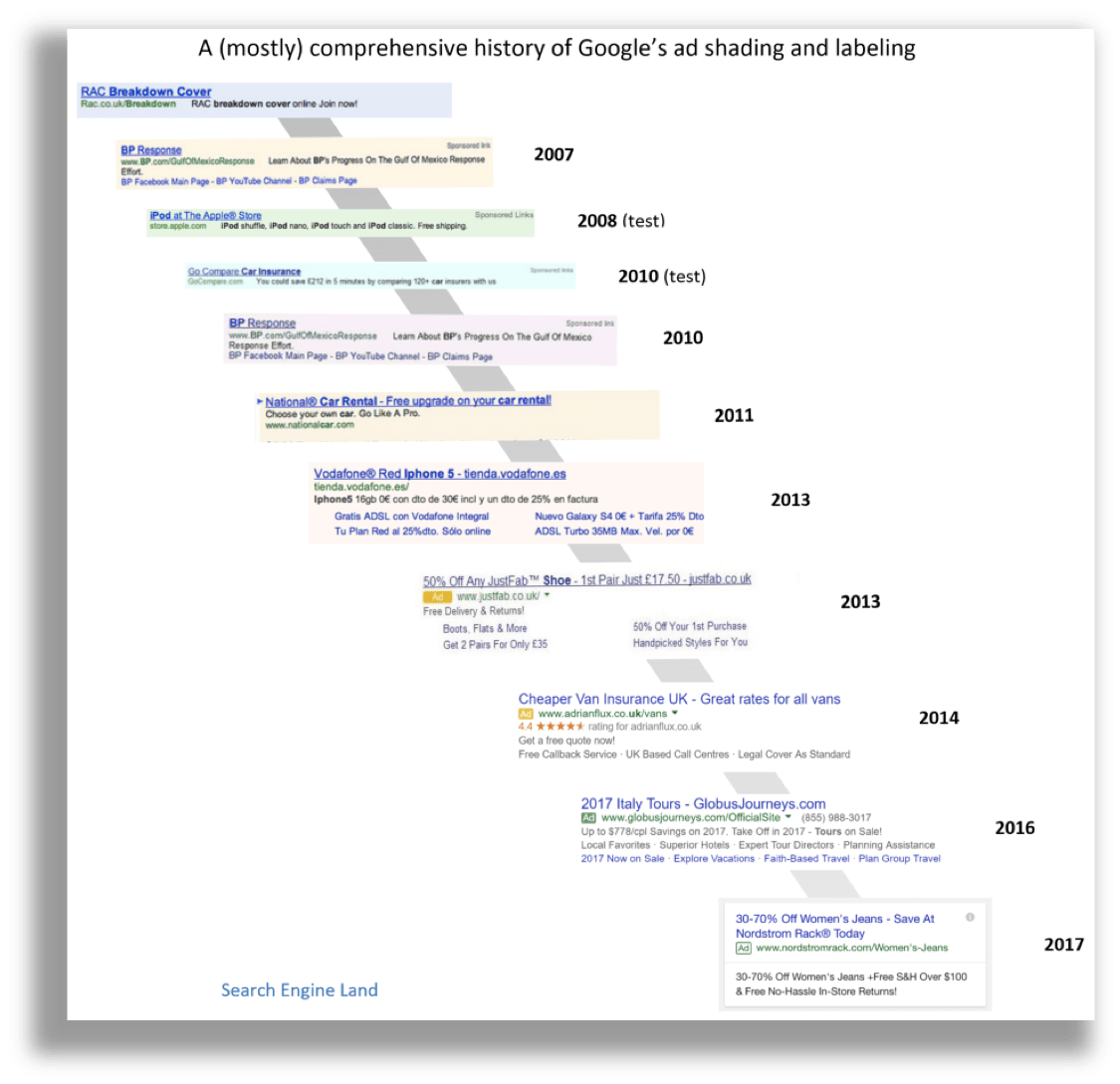
The display changes, visible above, have had an impact on user behavior and on the performance of sponsored links.
In fact, a recent study showed that over 55% of Internet users who consult Google do not distinguish between sponsored and free links. Summary of the Ofcom study
I leave you to draw your own conclusions 🙂
Which display for 2019?
Since 2016-2017, Google has been displaying its ads with the label “ads” or “annonce” in green.
It looks like something new is coming to the ad display this year.
Some tests are underway in the UK with a black display.
This information was published on the Search Engine Land blog.
It may only be a test run, but we’re expecting change.
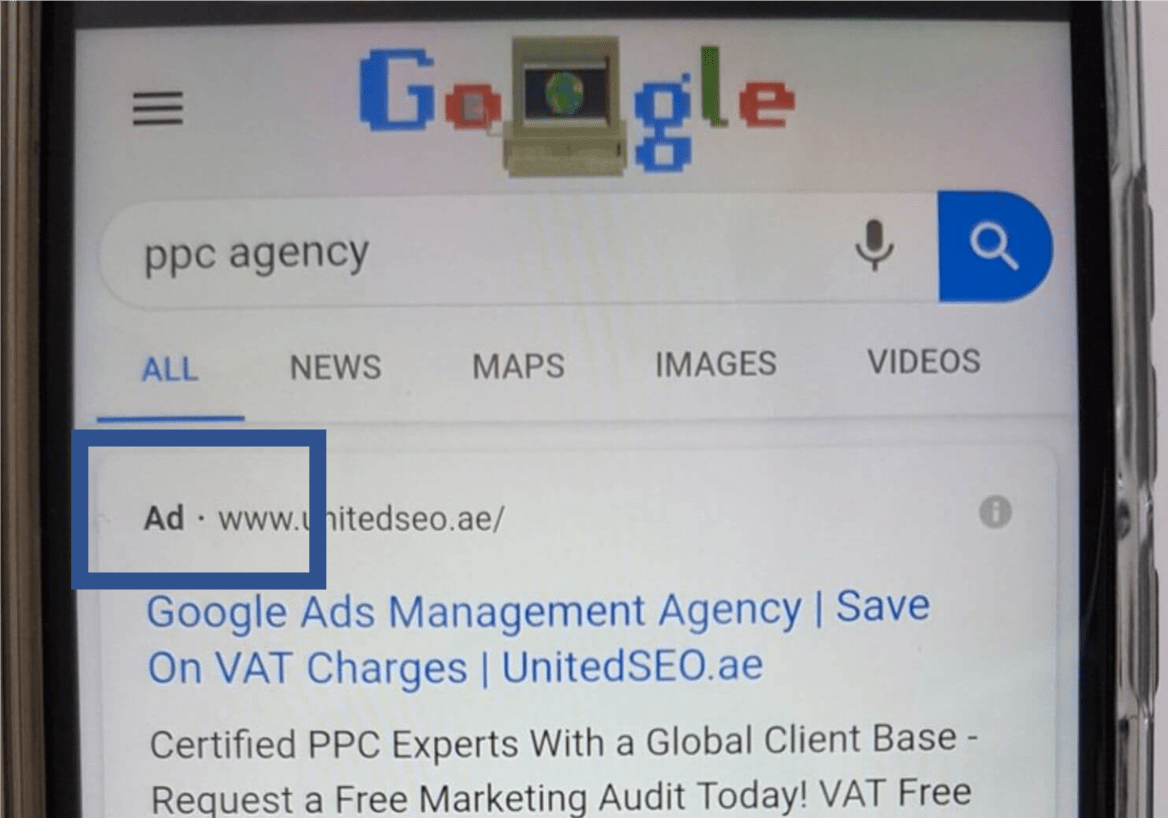
2. Remove side ads
As of February 2016, Google removed Adwords ads from the right-hand column of the SERP.
This removal was accompanied by the introduction of a fourth ad link in the “VIP square” at the top of the page.
Two exceptions:
Google Shopping ads gain visibility on the right-hand column
The Knowledge Graph
So from the 11 ads initially visible on a page (3 ads at the top of the page and 8 ads on the right-hand side of the results), we now have 7 ads visible in the results (4 ads at the top of the page and 3 ads at the bottom of the page).
Example of display on query “Seychelles stay” (to dream a little ;))
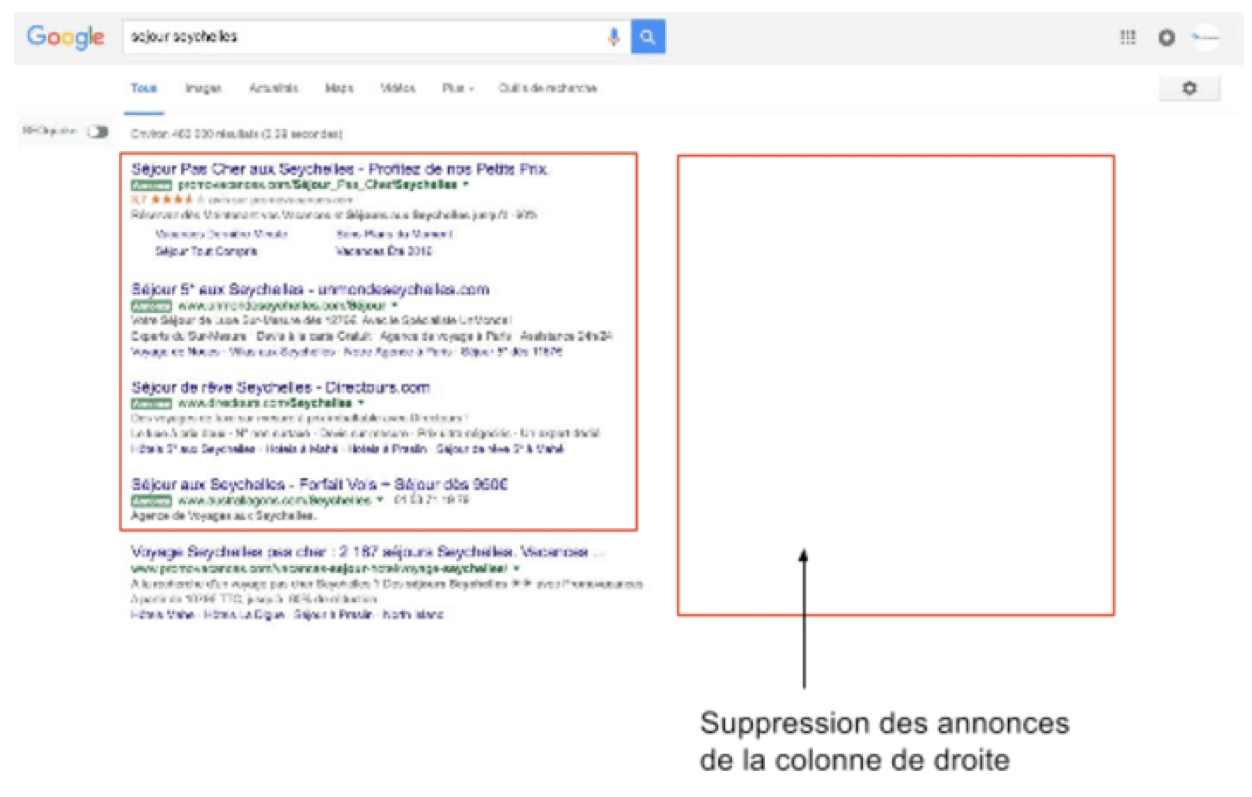
This change of display is in line with the harmonization of the engine’s results on Desktop and Mobile, since cell phones were not displaying the right-hand columns in their results.
On the Desktop, Shopping campaign ads benefited from this space to display more products.
The same applies to the Knowledge Graph, which is also displayed in the right-hand column.
3. Expanded Text Ads (ETA)
The ETA format was an important change, allowing longer ads to be shown on all devices (computers, mobiles, tablets):
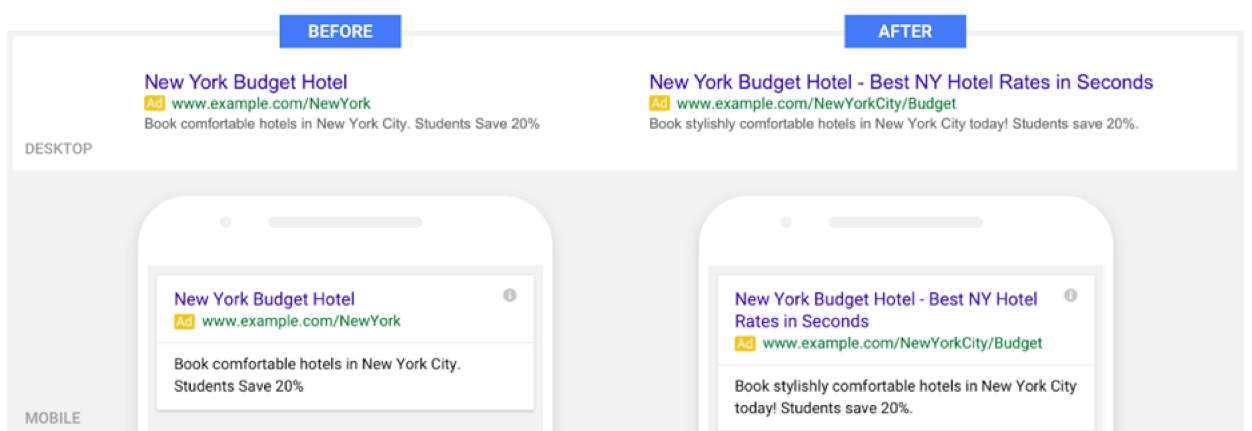
Historically, “classic” ads were structured as follows:
An ad title of 25 characters maximum
A first description of 35 characters maximum
A second description of 35 characters maximum
A displayed Url of 35 characters maximum
What’s new?
Second title line added (30 characters each)
Description lines merged (80 characters)
Customizable URL displayed (2 customizable fields of 15 characters each)
That’s a total of 170 characters; however, it’s the pixel size that counts for the display and length of the ad: a capital “M” is not the same size as a lowercase “m”, so your title may be “cut off” if the ad size is too large.
At the time, Google announced the results and benefits of this ad format:
A title that takes up more space to better showcase your products and services
Up to 50% more space for your ads (computer and mobile)
Up to 20% more CTR
Once again, the reasons given by Google for this major change: mobile.
Indeed, more than half of all searches are now carried out from a mobile device. The objective was to harmonize ad formats and display in search results.
Mobile Mobile Mobile… that’s one obvious conclusion I can draw from the changes we’ve made. For e-tailers, these changes have an impact not only on AdWords campaign performance, but also on budget allocation.
As a reminder, spending by advertisers on Google is still on the rise, and search (sponsored links, paid referencing) is the No. 1 item in the digital mix, accounting for 45% of online advertising spend (21st Observatoire de l’e-pub).
Search marketing is still dominated by Google, which accounts for almost 93% of search engine queries in France.
35% of purchases were made on cell phones in 2018 (+22% on 2017)
The second part is devoted to the major changes Google is proposing to the Shopping experience.
Part 2: Evolution of the Shopping Experience on Google
In 2014, Google had announced a change in its algorithm with what was called “Mobilegeddon” in favor of mobile/responsive sites in natural search (SEO) results;
A move designed to encourage e-tailers to speed up their transformation to more “mobile” sites, in the face of ever-increasing mobile traffic.
If we go back to Cisco’s forecasts for mobile traffic, it became essential for e-tailers (and Google) to adapt to the new uses we make of our “phones”…
Cisco’s forecasts were clear: worldwide mobile traffic will increase by a factor of 9.2 (between 2015 and 2020), at a rate of 56% per year.
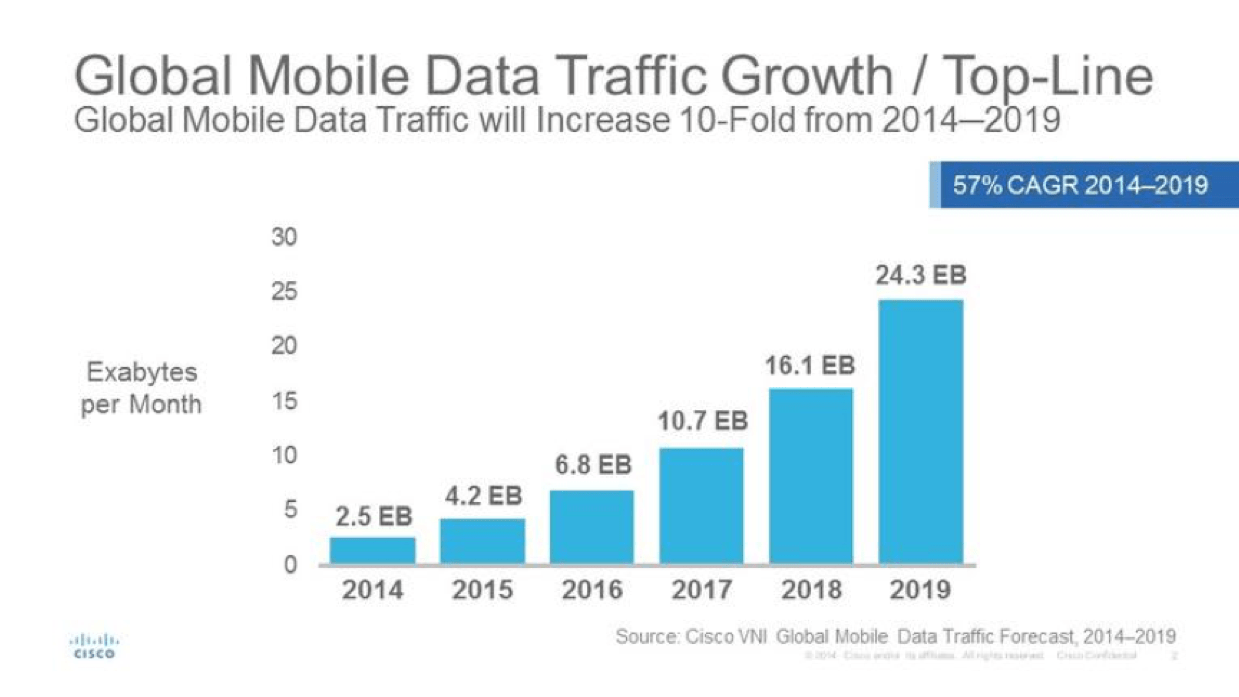
In fact, to force the march towards mobile, in 2014 Google launched the “mobile-friendly” label; the label is displayed in mobile search results, signaling to the surfer that the link’s web page met the criteria established by Google.
In the same move (May 2015), and a little more radically, it’s Google’s algorithm that favors “mobile” sites in natural results.
It’s the “Mobilegeddon”: the name given to the algorithm update in favor of “mobile friendly” sites. This update would have enhanced the natural results of 4.7% of “mobile” sites.
For many e-tailers, it has been difficult to assess the impact of mobile traffic on sales, as the volume of direct transactions remains lower.
It’s even harder to understand (or accept) when this traffic is paid for.
For a large number of sites, the situation remained the same: growing mobile traffic, but too few conversions…
As a result, Google has come up with new advertising formats that are supposed to be better adapted to the product searches and shopping moments of Internet/mobile users.
1. Shopping ad format on mobile: before/after
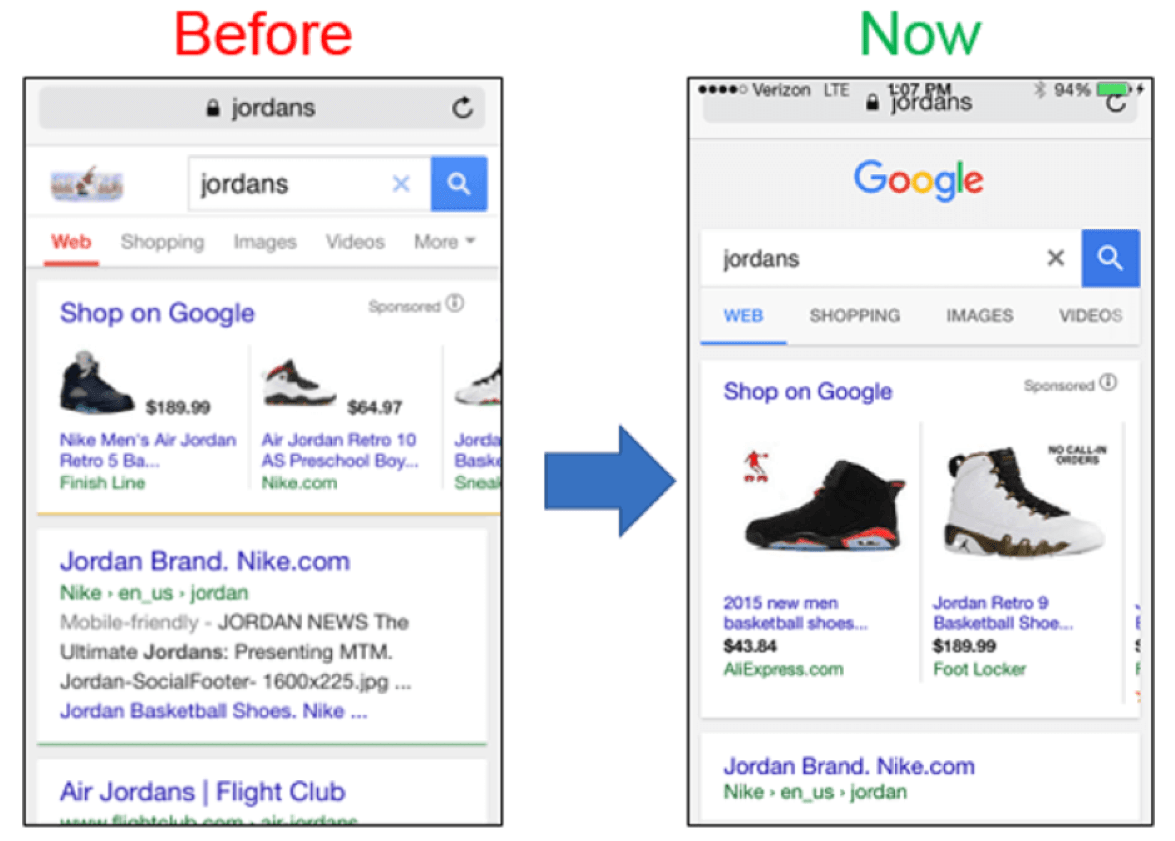
Here’s an overview of the evolution of Shopping ads on mobile. The results are clear: more space for Shopping ads with larger images. These changes are having an impact on advertisers’ budgets and traffic.
Clicks on Shopping (Mobile) ads increased by 193% Q1 2016 in the US (Q1 Digital Marketing Report by Merkleinc).
To build on this momentum, in May 2016, Google announced that Shopping ads would also appear in the engine’s “Images” results.
Since then, click volume has jumped significantly on the desktop: +13%.
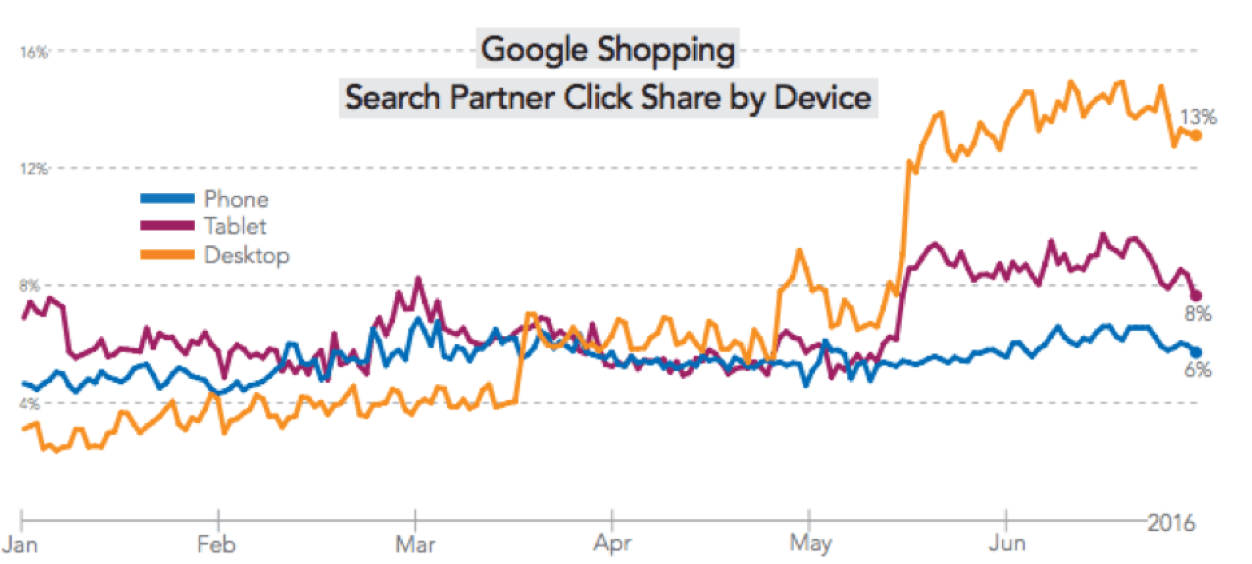
2. Showcase format for Shopping Campaigns
The simple fact is that 40% of shoppers’ Google searches are generic, vague searches.
Example: A search such as “sports shoes”, “evening dress”, “bedroom furniture”.
This type of imprecise search generates a lot of traffic (and acquisition costs). If I were an e-merchant, I wouldn’t want to pay too much for this type of prospect, who I imagine is still a long way from making a purchase.
On the other hand, I want to make sure that Internet users looking for a specific product can consult my offers.
During the “generic” search, you and I want to consult a wide range of products to find ideas or direct me towards a product that meets my needs.
Example: The dress I’d like to give my wife for her birthday, I think I’m going to shop around to make my choice.
However, today’s Shopping ads are much better at answering specific queries, and are less attractive to undecided Internet users.
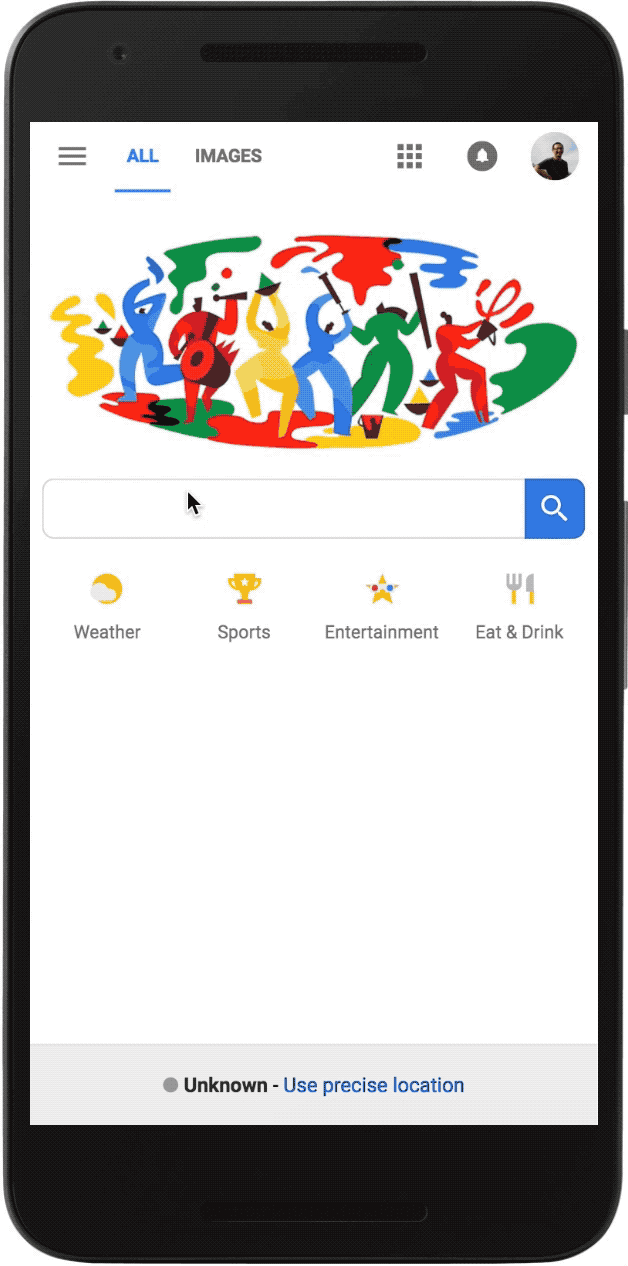
In this example, there are several stages in the search for and use of the “Showcase”:
- I search for “mirror” on Google
- Google displays several “Showcases” per advertiser
- I click on the advertiser, here Home Decor.
- All Home Decor “mirrors” are displayed.
The “Showcase” format seems to meet my need to browse and choose from online store catalogs.
And for e-tailers, paying for clicks from more qualified prospects.
3. Mobile price extension
Last but not least … July 2016, Google introduces the price extension.
The aim of this extension for mobile text ads: to attract ever more qualified leads, by adding information about the price ranges of your products and services.
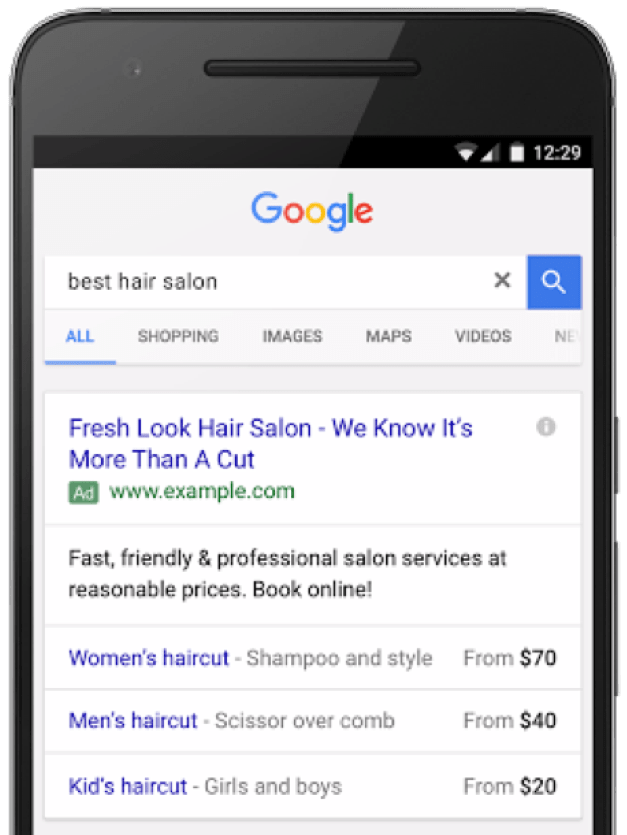
With this type of extension, we can “imagine” that Google has taken inspiration from e-tailers’ Shopping campaigns, which overall have higher conversion rates than text ads.
It’s also a way of discouraging buyers who don’t want to buy your products or services at the prices you charge.
For more information about Google Ads strategies and campaigns, please contact us!
